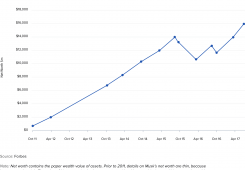In today’s fast-paced digital world, performance marketing has become essential to any successful marketing campaign. Performance marketing focuses on driving specific actions that are valuable to a business, such as website visits, lead generation, and sales. However, with so many businesses competing for customers’ attention, optimising your performance marketing campaigns to stand out from the crowd is essential. This article will explore the best strategies for optimising performance in performance marketing campaigns.
1. Clearly Define Your Goals
The first step in optimising performance in performance marketing campaigns is clearly defining your goals. What specific actions do you want your customers to take, and what are the key performance indicators (KPIs) will you use to measure success? For example, if you want to increase website traffic, your KPI might be the number of website visits. If you want to generate leads, your KPI might be the number of form submissions or phone calls.
Once you have clearly defined your goals and KPIs, you can start optimising your performance marketing campaigns to achieve them.
2. Use Data to Make Informed Decisions
One of the most significant advantages of performance marketing is tracking and analysing data in real-time. Use this data to make informed decisions about your campaigns. For example, if you’re running a pay-per-click (PPC) campaign, track which keywords drive the most clicks and conversions. Use this data to optimise your ad copy and targeting to maximise your return on investment (ROI).
Similarly, if you’re running a social media campaign, track which posts generate the most engagement and adjust your content strategy accordingly. Using data to inform your decisions, you can optimise your performance marketing campaigns for maximum impact.
3. Test and Refine Your Campaigns
Performance marketing campaigns are flawed from the start. Therefore, it’s essential to test and refine your campaigns continually. Try different ad copy, landing pages, and targeting to see what works best for your audience. A/B testing can be an effective way to test various elements of your campaign.
For example, you could create two versions of your landing page, each with different headlines, calls-to-action, and images. Then, send half of your traffic to each landing page and track which one generates the most conversions. Use this data to refine your campaigns and optimise your performance over time.
4. Use Retargeting to Re-Engage Your Audience
Retargeting is a powerful strategy for optimising performance in performance marketing campaigns. Retargeting involves showing ads to people who have interacted with your brand already but have yet to convert. By retargeting these users, you can re-engage them and encourage them to take the desired action.
For example, if someone visited your website but didn’t make a purchase, you could retarget them with an ad offering a discount code to incentivise them to complete their purchase. Retargeting can be an effective way to boost conversions and maximise the ROI of your performance marketing campaigns.
5. Continuously Monitor and Adjust Your Campaigns
Finally, monitoring and adjusting your performance marketing campaigns is essential, which means keeping an eye on your KPIs and adjusting your campaigns accordingly. If a campaign or ad isn’t performing well, pause it and try something new. Conversely, if you find a strategy that works well, double down on it and allocate more resources to that campaign.
You can optimise your performance marketing efforts by continuously monitoring and adjusting your campaigns for maximum impact.
What are the benefits of performance marketing?
Performance marketing offers several benefits to businesses, including:
- Measurable results: Performance marketing campaigns are designed to be measurable, meaning businesses can track their results and make data-driven decisions to improve their campaigns.
- Cost-effective: Because performance marketing campaigns are focused on driving specific actions, businesses only pay for the actions that are taken. This makes performance marketing a cost-effective way to drive results.
- Targeted: Performance marketing campaigns can be highly targeted, meaning businesses can reach their ideal customers with the right message at the right time.
- Scalable: Performance marketing campaigns can be scaled up or down depending on the needs of the business. This makes it easy to adjust campaigns based on budget or other factors.
What are the key performance indicators (KPIs) for performance marketing?
- The key performance indicators (KPIs) for performance marketing campaigns can vary depending on the campaign’s goals. However, some common KPIs for performance marketing include:
- Conversion rate: The percentage of users who complete a desired action after clicking on your ad.
- Cost per acquisition (CPA): The cost of acquiring a new customer through your campaign.
- Return on ad spend (ROAS): The revenue generated by your campaign compared to the cost of running the campaign.
- Click-through rate (CTR): The percentage of users who click on your ad after seeing it.
- Engagement rate: The percentage of users who interact with your ad in some way, such as by liking, sharing, or commenting on your content.
How to track performance marketing campaigns?
One of the most critical steps in optimising a performance marketing campaign is tracking and measuring its performance. Using tracking tools and metrics to understand the campaign’s performance and make data-driven decisions is the best way to see performance and improve its results.
Here are some common ways to track the performance of a performance marketing campaign:
1. Use conversion tracking:
Conversion tracking measures the actions users take after clicking on your ad. By using conversion tracking, you can see which ads drive the most conversions and adjust your campaign accordingly.
2. Track your return on ad spend (ROAS):
ROAS is a metric that measures the revenue generated by your campaign compared to the cost of running the campaign. This metric can help you determine the most profitable campaigns and allocate your budget accordingly.
3. Analyse your website analytics:
Analysing your website analytics can provide valuable insights into how users interact with your website and which pages drive the most conversions. By understanding how users interact with your website, you can make changes to improve the user experience and drive more conversions.
4. Use A/B testing:
A/B testing involves creating two different ad or landing page versions and testing them against each other to see which version performs better. By testing different ad creatives and landing page designs, you can optimise your campaign for better performance.
5. Monitor your click-through rate (CTR):
CTR is a metric that measures the percentage of users who click on your ad after seeing it. By monitoring your CTR, you can see which ads are performing well and which need improvement.
What are some common challenges in performance marketing?
Despite the many benefits of performance marketing, there are some common challenges that marketers may face when implementing these strategies. Here are a few of the most common challenges:
1. Measuring and attributing performance accurately:
One of the biggest challenges in performance marketing is accurately measuring and attributing the impact of campaigns to specific actions or conversions. This requires sophisticated tracking and attribution tools that can adequately track the entire customer journey and assign credit to each touchpoint along the way.
2. Maintaining cost-effectiveness:
Performance marketing can be highly effective, but it can also be expensive if not managed properly. Marketers must constantly monitor and adjust their campaigns to ensure they are achieving the desired results at a reasonable cost.
3. Finding the right partners and publishers:
In order to reach the right audience and drive valuable actions, marketers must find the right partners and publishers to work with. This requires careful research and evaluation to ensure that partners are reputable and have the right audience demographics and interests.
4. Staying up-to-date with new technologies and trends:
Performance marketing is a fast-paced field that is constantly evolving. Marketers must stay up-to-date with new technologies, trends, and best practices in order to stay competitive and achieve optimal results.
5. Managing data privacy and compliance:
With increasing regulations around data privacy and security, marketers must follow best practices and compliance guidelines in all aspects of their performance marketing campaigns, from data collection and use to ad targeting and messaging.
6. Adapting to changes in consumer behaviour:
Consumer behaviour is constantly changing, and marketers must be able to adapt their strategies to keep up. This requires a deep understanding of their target audience, preferences, and buying behaviours.
7. Managing competition:
Performance marketing is a highly competitive field, with many businesses vying for the attention and actions of the same audience. Marketers must constantly monitor and adjust their campaigns to stay ahead of the competition and achieve optimal results.
8. Balancing short-term and long-term goals:
Performance marketing is often focused on achieving short-term results, such as immediate sales or conversions. However, balancing these short-term goals with long-term strategies that build brand awareness and loyalty over time is also essential.
9. Creating engaging and effective ad content:
In order to drive valuable actions, marketers must create ad content that is engaging, relevant, and effective. This requires a deep understanding of their target audience and their preferences, as well as a solid understanding of ad design and copywriting best practices.
10. Building and maintaining strong relationships with partners and customers:
Performance marketing is all about building relationships with partners and customers. Marketers should invest in building strong, long-term relationships with their partners and customers to drive ongoing success and growth.
Overall, while there are certainly challenges to implementing performance marketing strategies, the benefits can far outweigh the risks. With careful planning, execution, and ongoing evaluation, performance marketing can be a highly effective way to drive valuable actions and achieve business growth and success.
Conclusion:
Optimising the performance of performance marketing campaigns requires a data-driven approach and a continuous cycle of testing and optimisation. By using the right strategies for audience targeting, ad relevance, landing page optimisation, bidding, and retargeting, marketers can maximise the effectiveness of their campaigns and achieve better results. Therefore, it is essential to stay up-to-date with industry trends and best practices to overcome challenges and optimise the performance of performance marketing campaigns.
In addition to the strategies mentioned above, businesses can use a few other tactics to optimise their performance marketing campaigns. One such tactic is to use influencer marketing. You can increase your reach and credibility by partnering with influencers with a significant following in your target audience. In addition, influencers can help you promote your products or services in a way that resonates with their followers, leading to higher engagement and conversions.
Another tactic is to use personalised marketing. Personalised marketing involves tailoring your messaging and offers to each user based on their preferences, behaviours, and past interactions with your brand. By delivering highly relevant and targeted messages, you can increase the chances of conversion and drive better results.
Finally, businesses can also optimise their performance marketing campaigns by using automation tools. Automation tools can help streamline and optimise various aspects of your campaigns, such as ad targeting, bidding, and optimisation. By leveraging these tools, you can save time and resources while maximising your ROI.
In summary, optimising performance in performance marketing campaigns requires a combination of clearly defined goals, data-driven decision-making, continuous testing and refinement, retargeting, and ongoing monitoring and adjustments. By following these strategies and tactics, businesses can drive measurable results and achieve their marketing goals more effectively and efficiently.



































